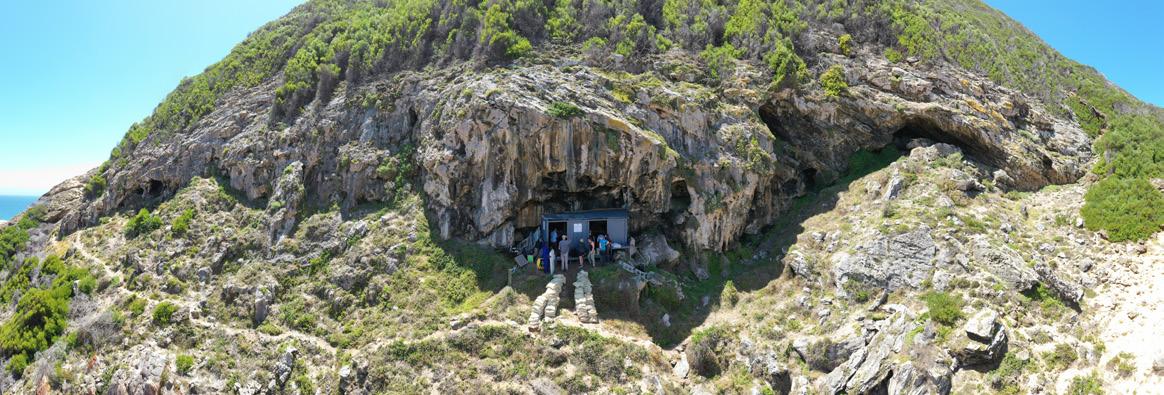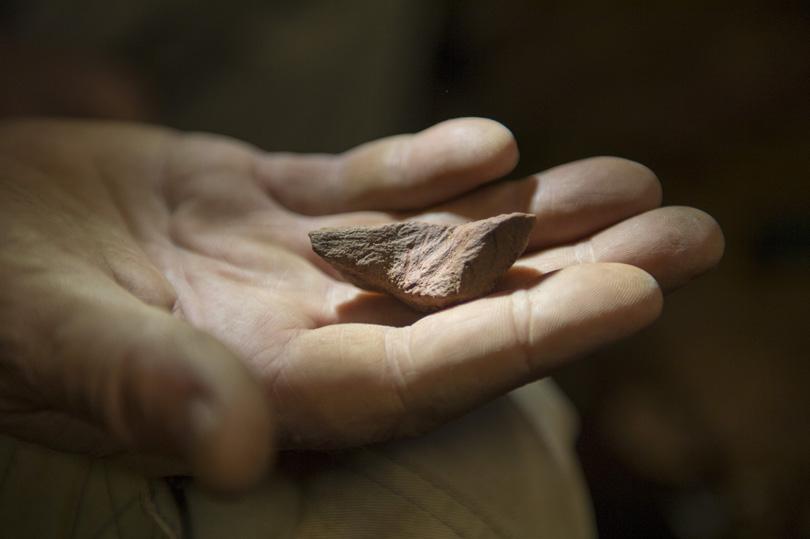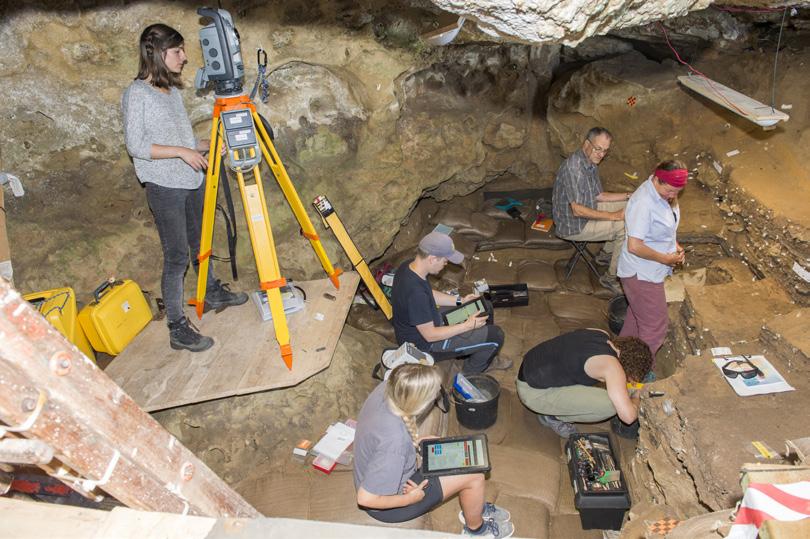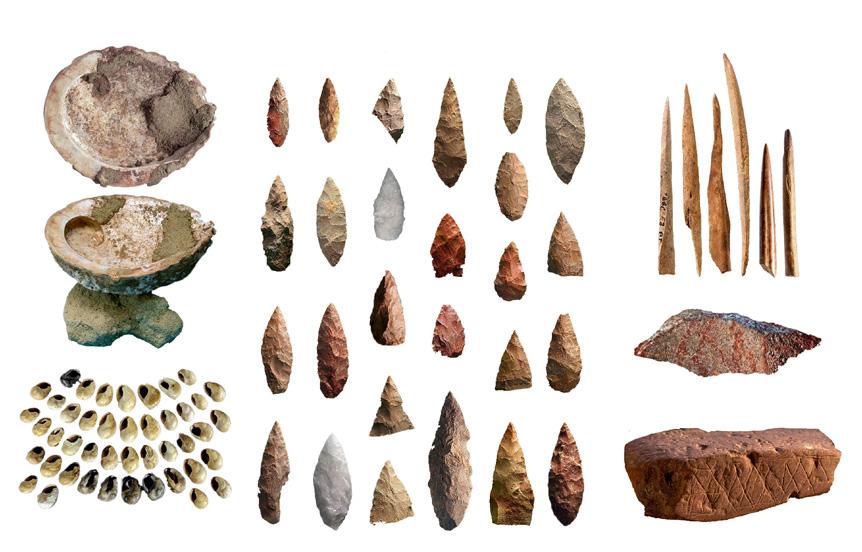
3 minute read
Fieldwork
The route down to Blombos Cave from the car park
FIELDWORK Blombos Cave excavations, southern Cape, South Africa – 14 January – 22 February 2019
Blombos Cave is an archaeological site situated on the southern Cape coast, approximately 300 km east of Cape Town. The cave contains Middle Stone Age materials that date to between 100 000 and 70 000 years ago, as well as Later Stone Age material dating to the last 2000 years.
The Blombos Cave Middle Stone Age layers contain remarkable artefacts that inform us about the origin and timing of the behavioural evolution of our species. Some of these finds include a 100 000 year old ochre processing kit, engraved ochre and bone, the oldest known drawing, bone tools, shell beads, and stone tools which had been intentionally heated to facilitate fine retouch. In addition to cultural artefacts, the faunal and floral remains recovered from Blombos Cave indicate that the inhabitants were well adapted to their environment and employed a diverse range of food procurement strategies. The site was first excavated in 1991, and in 2019 we conducted our 16th season at the cave. The excavation crew consisted of a core team of 11 SapienCE archaeologists and climate scientists, with several additional researchers visiting for shorter periods. We stayed at the field house, located on a remote area of the coast. Access to the site requires a 2 km hike over a rough coastal path or a drive through the Blomboschfontein Nature Reserve in 4x4 vehicles, followed by a relatively short but steep walk over calcretes and dunes to the cave. All material and equipment, including heavy generators, solar panels and batteries, reach the site via the latter route, and are carried out at the end of the season!
In 2019 our primary focus was to excavate Middle Stone Age deposits at the front of the cave, with the aim of eventually exposing a large area of the cave floor dated to over 100 000 years ago. We started by removing archaeologically sterile dune sand that overlies the Middle Stone Age de



A piece of ochre with incised lines Excavating and recording inside the cave
posits, and then carefully excavating each of the underlying archaeological layers. The upper layers, dating to between 70 000 and 76 000 years ago, are attributed to the Still Bay phase of the Middle Stone Age. From these layers we recovered numerous stone bifacial points, which are characteristic of the Still Bay phase, as well as a number of shell beads. Well preserved bone, ostrich eggshell, shellfish and ochre were also recovered. Similar materials were recovered from the layers below, but here bifacial points and beads were absent and considerably more ochre artefacts were found.
To produce a long-lasting record of our excavations we employed a state-of-the-art digital recording system specifically developed for the site conditions at Blombos Cave. Nearly a thousand individual artefacts and interesting features in the sediments were plotted in 3D using a Trimble Total Station surveying system. Material that was not plotted was sieved through 3 mm and then 1.5 mm sieves. The fractions retained in each sieve were taken back to our curator at the field house to be washed, dried and sorted into the various categories – stone, bone, shell etc. for further specialist analysis.
In addition to excavation, several samples and datasets were collected by the various specialists who visited the site. These include ostrich eggshell for novel uranium-thorium dating as well as isotopic analyses, soil samples for ancient DNA detection and leaf wax extraction, sand for optically stimulated luminescence dating, blocks of sediment for micromorphology and drone data for landscape reconstruction. We made good progress towards our goal during the 2019 season, and a number of exciting finds now require careful specialist analysis. Excavations will continue at Blombos Cave in 2020.
Artefacts found at Blombos Cave.

Clockwise from the top right: bone tools; the World’s oldest drawing; engraved ochre; bifacial points (centre of the image); shell beads and ochre processing kits.










